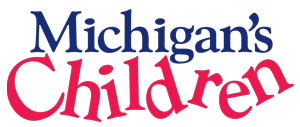The Federal Role In Education Policy, ESEA Update
July 22, 2015 – We have heard a lot about the fact that for the first time since 2001, both chambers in Congress have passed their recommendations to reauthorize the Elementary and Secondary Education Act (ESEA), currently known as No Child Left Behind (NCLB.) This is monumental, particularly since the kids who were starting kindergarten in 2001 are now 19- and 20-year olds, some still making their way through high school and others in post-secondary or career. 2001 was a long time ago in education years, and much has changed in homes and communities that should be reflected in schools and education policy.
What hasn’t changed is the primary role of the federal government in education. Because K-12 and post-secondary education are primarily resourced by states and localities, the federal role and investment emerged for one reason only: to ensure that everybody has equitable access to educational opportunity. That access takes several important forms:
Assistance for students, families, schools and communities facing the most challenges. We have to best support students who need special help and accommodation for learning, of which many of their needs are primarily addressed within the Individuals with Disabilities Education Act. Beyond that, research has shown for decades that the most under-resourced students tend to go to the most under-resourced schools. Many students face multiple personal, family and community challenges that begin early, go beyond the school walls and impact education outcomes. However, schools alone cannot and should not be responsible for addressing those challenges but can be a great access point for critical services. Current cradle to career investments are not enough, and much more can and should be done to support evidenced programming.
Accountability requirements for our education investment. We know who we are supposed to be helping with additional assistance, so it is essential to understand how different populations of students are doing to evaluate how well we are doing it. This has been and will continue to be done by looking at student outcomes (test scores, graduation rates) and the reporting of those outcomes specifically for targeted population groups by race, income and other individual or family circumstances like disability, homelessness, participation in the foster care system, English Language Learners, etc. This is essential to continue to understand our successes and challenges with reducing achievement gaps.
Incentives for innovation. We don’t always have all of the answers, and the times do change, so it is always important to encourage best practice and shifts in teaching and learning based on the specific needs of certain populations, or emerging research and practice. Recent federal efforts like Race to the Top, Investment in Innovation and Early Learning Challenge grants are examples of how federal investment can help states and districts make big, innovative changes in their education systems.
There are two different bills on the table to reauthorize the ESEA — the Senate Every Child Achieves Act (S. 1177) and the House Student Success Act (H.R. 5) . Michigan’s Children favors the Senate version, which keeps intact many essential programs supporting evidenced practice to best support struggling students. This includes supports like the 21st Century Community Learning Centers program, investments long before kindergarten and connections for students and their families to resources and services beyond the traditional K-12 system to support their learning and development. The House version intentionally combines many critical programs into block grants to the states. This approach would limit the ability of the federal funding to target proven equity-building strategies. I won’t belabor the details here, but you can find them all in all of the media coverage, from many of our advocacy partners and from the Congressional Research Office in great detail here.
Concerned with how all of this plays out? We are too. The good news is that this conversation is far from over, and we all have an opportunity this summer to get involved. A conference committee made up of legislators from both parties and chambers will be working into the fall to come to a resolution of the differences, and there is still time to influence them. Members of the U.S. House and Senate will be home in their districts next month. Use that time to let them know what you see challenging or helping with the success of students and families in your community. Help your elected leaders think about how best to address educational needs to build career and college ready kids in 2015 and beyond. If you run a summer program, invite them to join you to talk directly with young people, parents and staff.
While it is unlikely that members of our Michigan delegation will be sitting on the conference committee, it is critical that you encourage your members to talk with their conferee colleagues. And if you want help, Michigan’s Children is here to support your efforts. Now is the time.
– Michele Corey
